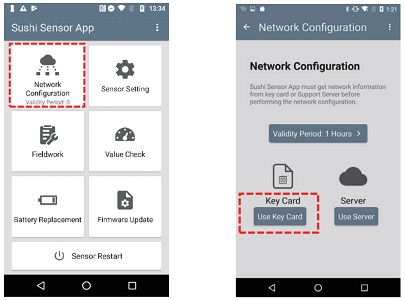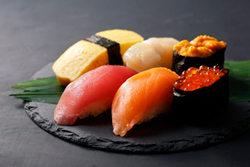Leverage of Remote Asset Monitoring
Don’t you entrust equipment maintenance solely to operator rounds? There is a limit to monitoring all the equipment deployed across a large plant.
Why don’t you to remotely monitor the condition of the equipment instead of having operator rounds throughout the plant? Most operator rounds simply verify that the equipment works normally. By being able to monitor the condition of equipment remotely at all times, you can inspect specific equipment that shows anomaly in advance without having to visit a site, thus improving efficiency. However, remote monitoring requires IT technology to cover a wide range of factories and centrally manage them. Therefore, realizing remote asset monitoring is a challenge due introducing the necessary IT technology.
Challenges in Deploying Remote Asset Monitoring
- Many monitoring points deployed over a wide area.
- Mounting sensors hazardous or difficult-to-access locations.
- Saving time: Large number of installation and configuration tasks, including power and communication wiring
Industrial IoT Solutions Using Sushi Sensor for Remote Asset Monitoring
Yokogawa advocates Industrial IoT Wireless Solutions.
We offer remote monitoring using the IoT technology in Sushi Sensor.
- Uses the LoRaWAN® wireless standard for long-distance communication
- Water and dust proof, and explosion proof
- Battery-powered sensor equipped with wireless communication
Benefits of Remote Asset Monitoring
- Monitor the condition and health of equipment constantly without having to be in the site.
- Detect "something wrong" before the equipment shows an abnormal value to know when maintenance and inspection is necessary, and respond to problems quickly.
- Know the "signs" and respond early—shorten downtime from sudden shutdowns and malfunctions, minimize waste due to equipment failure or deterioration in product quality, and increase efficiency in equipment maintenance and production.
-
Wireless Pressure Sensor
This product acts as a battery-powered wireless pressure sensor, and it is suitable for Industrial IoT (IIoT) applications. Wireless Pressure Sensor has the function of measuring the gauge pressure of gases and liquids in a piping.
-
Wireless Temperature Sensor
This product acts as a battery-powered wireless temperature sensor, and it is suitable for Industrial IoT (IIoT) applications. Wireless Temperature Sensor supports 2 inputs of IEC standard thermocouples (any of 9 types including Type B, E, J).
-
Wireless Vibration Sensor
This product acts as a battery-powered wireless vibration sensor and it is suitable for Industrial IoT (IIoT) applications. Wireless Vibration Sensor measures vibration along the X, Y, and Z axes in addition to monitoring the surface temperature.
Details
Features
[Easy Installation]
- Compact, lightweight, battery-powered sensors.
- Operable in harsh environments including hazardous areas (waterproof, dust-proof, and explosionproof).
- The LoRaWAN® standard enables long-distance communication of up to 1 km, and thus flexible installation.
[Easy Setting]
- Parameters can be set with a smartphone via near-field communication (NFC).
[Easy Data Collection and Monitoring]
- Data can be collected over a wide area via long-distance wireless communication.
- Collected data can be accessed from user applications in the cloud.

Why is it called "Sushi Sensor" ?
Sushi Sensor is named after sushi, a hand-pressed traditional Japanese food which combines rice with various toppings.
- Like sushi is easy to eat, Sushi Sensor can be easily installed.
- Like skilled professionals prepare sushi, Sushi Sensor is a robust, finely-crafted product.
- Like sushi comes with various toppings, various kinds of sensors are being developed for Sushi Sensor.

Sushi Sensor is a Wireless Solution for Industrial IoT
To improve the availability ratio and profitability of plants, timely identification of health conditions and efficient maintenance of aged equipment are required. Various sensing technologies are needed to monitor conditions and maintain diverse equipment. In order to maintain equipment distributed across a plant efficiently with limited man-hours, quantification of measurement data and automated data acquisition and storage systems are required. Sushi Sensor monitors vibration, temperature, and pressure as data for inviting the maintenance of the equipment. The monitored sensor data are stored in host systems such as the cloud or the on-premises via wireless communication.
Since it complies with LoRaWAN®, which is a low-power wide-area (LPWA) network for long-distance communication, the Sushi Sensor can be deployed anywhere in a plant and cover a vast area. Also, it has environmental resistance features to support heavy-duty use (IP66/67, explosion proof).
Users can identify equipment conditions by trend monitoring in the cloud or the on-premises, and then plan and perform maintenance efficiently, tailored to the equipment conditions. Comprehensive monitoring the condition of the whole plant helps create priorities of equipment risks and maximize investment in equipment maintenance in a balanced manner.

Solutions
(Digitizing)Sensing
Sushi Sensor monitors vibration, temperature, and pressure as data for maintaining equipment. The monitored sensor data are stored in host systems such as the cloud or the on-premises via wireless communication.
(Digitalizing)Sensemaking
Users can identify equipment conditions by trend monitoring in the cloud or the on-premises, and then plan and perform maintenance efficiently, tailored to the equipment conditions.
(DX)Digital Transformation
Comprehensive monitoring the conditions of the whole plant helps create priorities of equipment risks and maximize investment in equipment maintenance in a balanced manner. quantification of measurement data and automated data acquisition and storage systems are required.
How Sushi Sensor Benefits Remote Asset Monitoring
[Benefits of the Equipment]
- Reduce inspection man-hours by automatically collecting data on equipment (even in high and hazardous areas) and make it available online
- Quantify and visualize inspection results that depend on individual experience, intuition, and on-site know-how
- Reduce variance in inspection quality due to differences in staff skill
- Trend monitoring of equipment enables early detection of abnormal signs ("something wrong") and avoids oversight
[Supports Determining Next Steps]
1) When an anomaly is detected, the operator performs a detailed diagnosis and identifies the cause.
2) Based on the results, the operator determines the appropriate action and schedule.
The operator can focus on value-adding tasks such as detailed diagnostics and determining next steps. Sushi Senser detects signs of abnormalities and contributes to CBM.
Yokogawa Advocates APM
Yokogawa enhances the value of customers’ equipment through asset performance management (APM).
To maximize the value of equipment, APM focuses on the availability of equipment and evaluates their performance. To maximize performance, APM should be performed not only in maintenance but also in operation and other areas where maintenance and operation must be collaborated to complement each other.
Conventionally, plant operation systems aim to improve production efficiency and product quality while equipment maintenance systems aim to both maximize operational efficiency and minimize costs. However, when maximizing production efficiency, maintenance costs are not necessarily optimized. Although operation information and maintenance information must be combined to maximize profits for the whole plant, this is rarely achieved mainly because maintenance is not always quantified.
To solve this problem, Yokogawa has developed Sushi Sensor, which consists of a sensor that collects basic data for equipment maintenance and functions that quantify, accumulate, and analyze these data, enabling operators to make objective judgements.
Sushi Sensor strengthens collaboration between operation systems and equipment maintenance systems, achieving APM that optimizes all phases from the detection of equipment conditions by sensors to decisions on appropriate actions by operators.
Yokogawa’s APM not only optimizes equipment maintenance but also improves the operation of the whole plant.
Complementary collaboration between operation and equipment maintenance.

Resources
Kyowa Hakko Bio monitors vibration trends with Yokogawa's Sushi Sensors to prevent unexpected equipment failures.
By using eServ, sensor data and maintenance information are shared with everyone involved in manufacturing.
Osaka Metro selected Yokogawa's Sushi Sensors to monitor vibration of huge ventilators.
Monitoring vibration trends prevents unexpected failures of air-conditioning systems in subway stations.
Downloads
Brochures
News
-
Press Release �.�. 20, 2020 Yokogawa to Expand Sushi Sensor Wireless Industrial IoT Solution Lineup in Europe, North America, and Southeast Asia
- New sensors enable easy online collection of pressure and temperature data -
Looking for more information on our people, technology and solutions?
Contact Us









